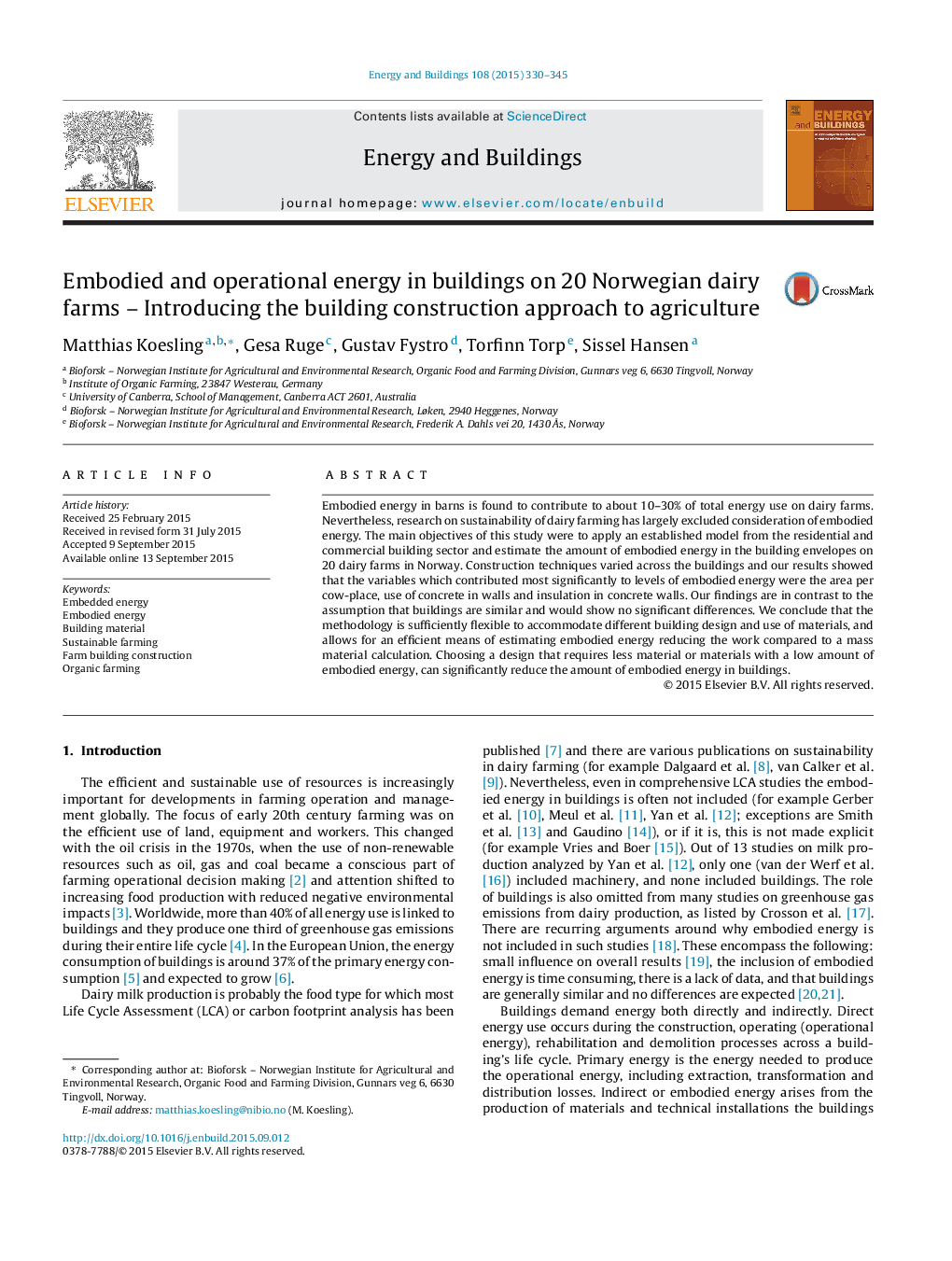| Article ID | Journal | Published Year | Pages | File Type |
|---|---|---|---|---|
| 6731115 | Energy and Buildings | 2015 | 16 Pages |
Abstract
Embodied energy in barns is found to contribute to about 10-30% of total energy use on dairy farms. Nevertheless, research on sustainability of dairy farming has largely excluded consideration of embodied energy. The main objectives of this study were to apply an established model from the residential and commercial building sector and estimate the amount of embodied energy in the building envelopes on 20 dairy farms in Norway. Construction techniques varied across the buildings and our results showed that the variables which contributed most significantly to levels of embodied energy were the area per cow-place, use of concrete in walls and insulation in concrete walls. Our findings are in contrast to the assumption that buildings are similar and would show no significant differences. We conclude that the methodology is sufficiently flexible to accommodate different building design and use of materials, and allows for an efficient means of estimating embodied energy reducing the work compared to a mass material calculation. Choosing a design that requires less material or materials with a low amount of embodied energy, can significantly reduce the amount of embodied energy in buildings.
Related Topics
Physical Sciences and Engineering
Energy
Renewable Energy, Sustainability and the Environment
Authors
Matthias Koesling, Gesa Ruge, Gustav Fystro, Torfinn Torp, Sissel Hansen,
